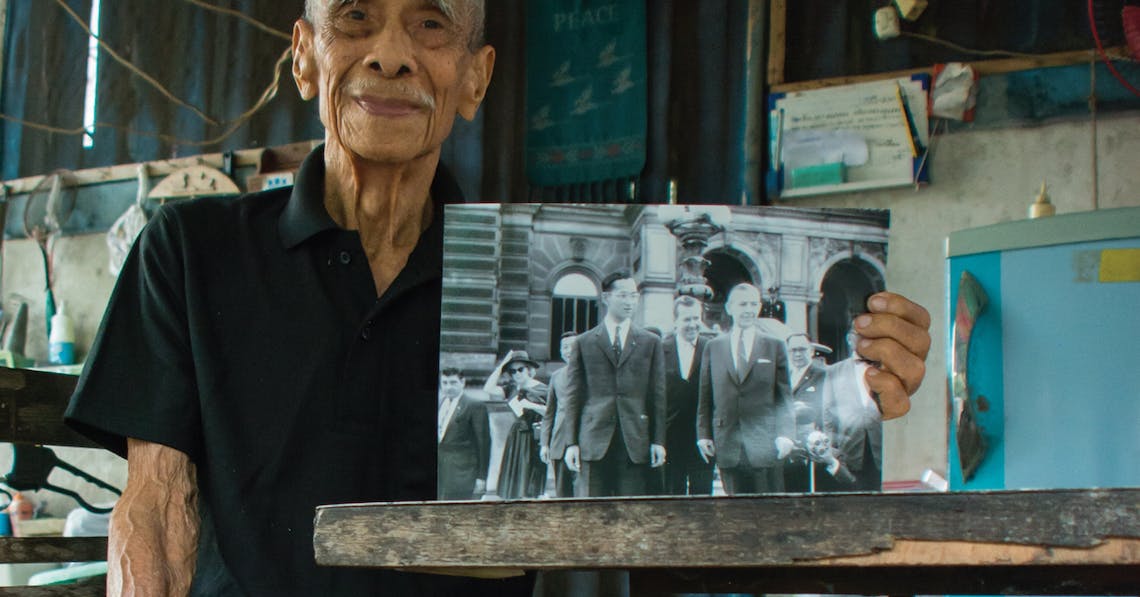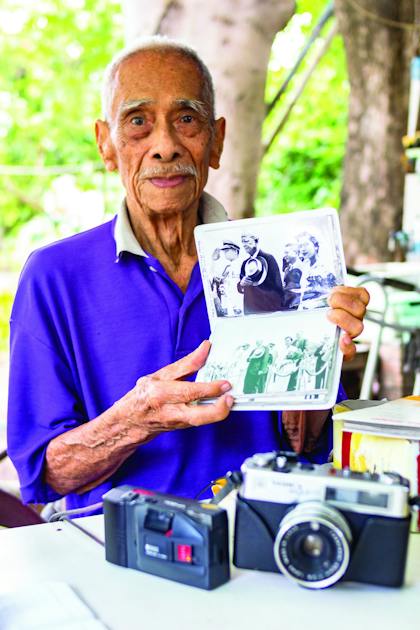
The year was 1960. This is the story of how a self-proclaimed unimportant man from the then-small town of Chiang Mai was lucky enough to have crossed paths with the most important man of his life and become a part of history.
Wichitr Jayauann, now 93 years old, was the then-owner of Chiang Mai newspaper, Kon Muang, originally founded in 1953. He was also the paper’s photographer as well as its editor, though says that his time there, with one notable exception, was mostly uneventful: official visits here, new roads opening there, the odd wedding announcement and advertising for the latest swing bop at the local dancehall.
As you would expect, the editor of a local newspaper gets around and meets many people. Over dinner one day with a US Consulate staffer (the consulate was upgraded to Consulate General in 1986), he was surprised to hear that the consulate had decided to put in a request to issue him with a three month visa to visit the US. One brand new passport and one visa stamp later, Wichitr was set to go on his first trip abroad.
While he was deliberating the best time to go, a letter was posted through his office letterbox. A letter was from the Royal Palace, addressed to all editors and media companies in Thailand, announcing that King Bhumibol Adyuladej was heading to America on his first visit to the States since his birth in a small hospital in Massachusetts back in 1927. Wichitr now knew when he had to visit; it was too good of an opportunity to be missed.
With an official State Department invitation in hand, he headed off to America on a first class ticket paid for by the embassy. Stopping off in Hong Kong on the way to pick up a brand new colour Yashica MG-1 and a Ricoh ½ frame camera along with some cheap films, he landed in Hawaii one month before the King’s scheduled visit.
In his bag was yet another letter from the Chiang Mai consulate, this time a request for Wichitr to receive an official press pass during His Majesty’s visit, allowing him access to the most personal of meetings and, as he later found out, the only non-official photographer who was allowed anywhere near the King himself. He also was issued a state department driver that would take him anywhere he wanted, and $17 spending money per day. The press had a lot more cache in those days…
After exploring the states and scoping out some of the cities the King would be visiting during his journey, Wichitr headed to Washington DC to meet the man himself, scheduled to land at The Military Air Transport Service Airport on June 28, 1960. As he was waiting on the tarmac he saw a familiar face in the crowd of excited fans, a family member who was studying in a nearby university who had also came to see the King. Before they could exchange too many words their voices were blocked by the roar of a jet engine airplane painted with a Thai flag and Royal decals, and Wichitr ran back to the landing strip to stand side by side with dignitaries, his camera in hands…hands which were shaking with excitement.
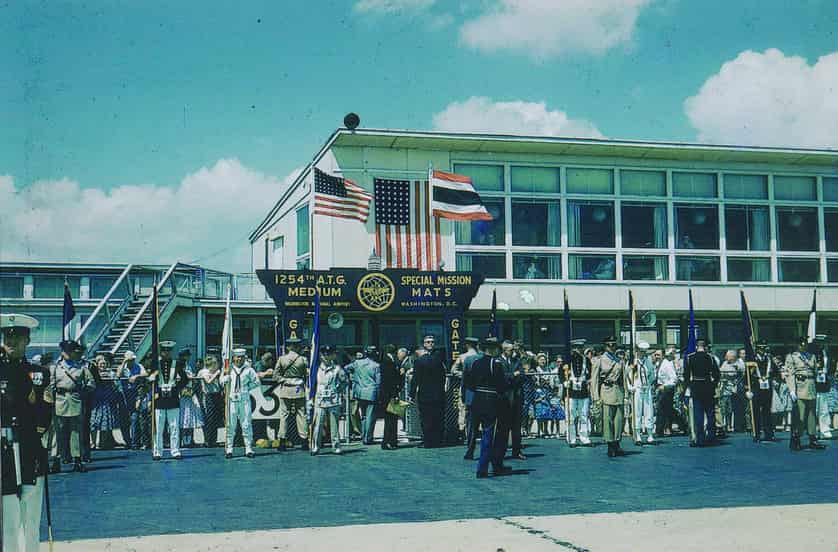
Snap. The first photo taken. Whirr. Snap. The second. Soon a full colour film was full. Switching out to his black and white ½ frame he could take another 72 photos before the film was used up. The King shook hands with President Eisenhower and stepped down from the podium. Walking straight past Wichitr, he got into a car and was driven towards the city. The official visit was to begin the next day, so Wichitr rushed back to his hotel, processed his films and sent a few stills back home, along with a small article to be published in Kon Muang as soon as it arrived in Chiang Mai a week or so later.
The next day, bright and early, Wichitr and his driver headed to the city, where streets were lined with Americans, and the odd Thai, ready to see the royal visitors pass in a motorcade towards the United States Congress. His Majesty came with an official Thai photographer and it was only he and Wichitr who were allowed to be on the right side of the fence which separated the cheering crowds from the Royal motorcade. With access to angles and images virtually aligned to those of the royal couple themselves, his pictures remain historic in their access and perspective.
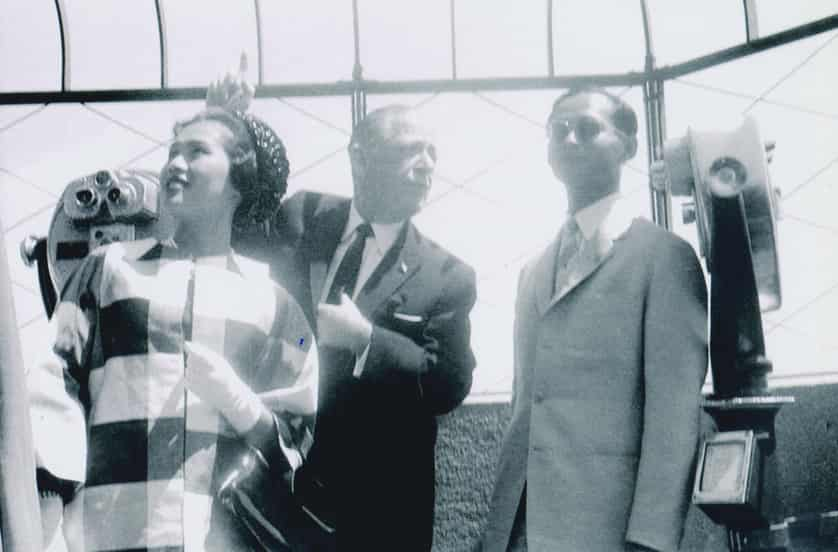
Over the next few days Wichitr followed the King wherever he went, taking candid images, atmospheric snapshots and close-up stills of some of the most personal experiences of the King and Queen. On the third day King Bhumibol visited the White House and exchanged gifts with President Eisenhower in the Oval Office. A small handful of journalists were invited to sit in a roped-off area of the room so that the moment could be documented. Wichitr found himself sitting next to a fellow countryman, Chaiyong Chaowalit, a journalist working in America. In typical Thai style, the duo spent most of the meeting snapping photos and whispering gossip to one another, something that still frustrates and confounds people when faced with a nosey of Thai journalists today. As the King finished his visit and headed to the door, passing the two twittering journalists, he looked directly at Wichitr and muttered three words in Thai “อย่าคุยกัน” or “stop talking”. These were the only words the King exchanged with Wichitr during his entire trip, and yet despite them being words of warning, Wichitr still boasts proudly that the King once spoke to him…failing to elaborate that it was more scold than speak!
After Washington DC came New York. A new motorcade parade, a new set of faces looking on in awe, and ticker-tape falling from the skies. During a visit to the top of the Empire State Building with President Eisenhower, Wichitr found himself the only photographer present. Wichitr stood sheepishly, recently chastised, as the King and the President gazed out over the city; talking, laughing and being human. Out of respect, he only managed a few holiday style snapshots before descending to ground level.
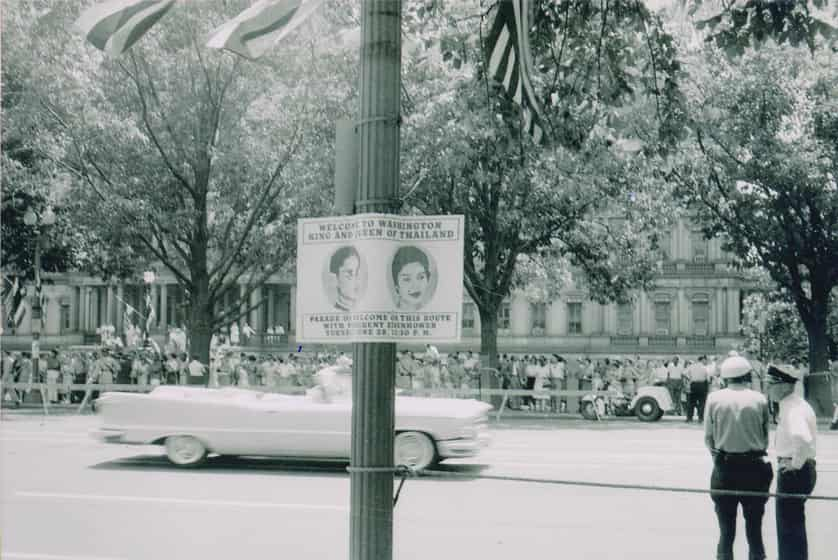
Over the next week he followed the royal couple, taking photos from angles, and during moments unrecorded by any other photographer. He took photos of the King at the Tomb of the Unknowns, the Abraham Lincoln Statue, The Statue of Liberty, and Niagara Falls, travelling across America on what was to be a trip of a lifetime. Each day, stills were sent back to Chiang Mai via Air Mail with the latest update on the royal couple’s US visit from proud editor Wichitr.
Another highlight of the trip was when the King visited the very hospital he was born in — The Mount Auburn Hospital in Cambridge, Massachusetts. Retired doctor W.S. Whittermore told stories to the small crowd present of the King’s birth, and reminisced about naming him simply ‘Songkla Baby’, until a royal title was given. The King listened to the doctor and nurses who brought him into this world, smiling and laughing along with the rest of the crowd. He then presented Dr. Whittermore with a golden plate with a message inscribed on in reading ‘To Doctor Whittermore, my first friend in the world’.
Emotion was running high, nurses were tearing up and the King momentarily let himself go, laughing and chatting with nurses and doctors as if he was catching up with long lost friends. One of Wichitr’s favourite pictures depicts the King laughing with four nurses, momentarily oblivious to Wichitr’s whirring and snapping.
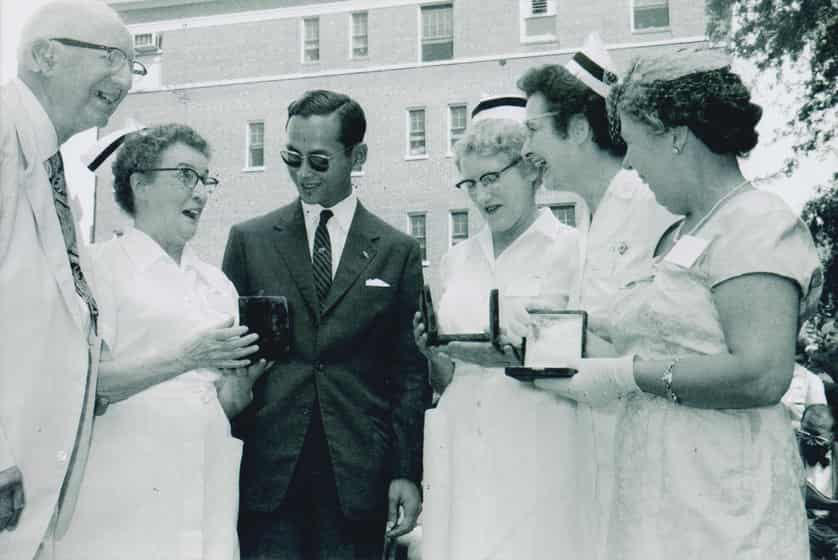
Two weeks later the royal visit was over. With rolls of film filling his backpack, Wichitr wrote his final editorial and posted it back to Thailand along with a still from his final roll of film. Sitting in his hotel he flicked through the developed photos and contemplated this monumental opportunity — from local Chiang Mai newspaper editor to Royal photographer in just two ticks of an American official’s pen.
After stopping by London, Copenhagen and a few other European cities where Wichitr blew off some steam and celebrated his once-in-a-lifetime experience, he finally made it home three months later, his wife eagerly waiting for him at Chiang Mai Airport as he touched down in late July.
Wichitr’s story was lost in time, his photos collecting dust in storage boxes, unseen for generations. When Citylife visited him last month, he was sitting outside his one-room wooden house in the outskirts of Mae Wang, sipping a cup of water, waiting for somebody to pay him a visit — he has no email or phone, the only way we could find him was to simply turn up.
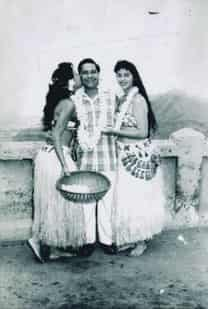
Flicking through his photo albums, he smiled at every snapshot, and shared the story behind each one. Taken fifty six years ago, the films and images were in surprisingly good condition. “This is my masterpiece,” he told us as he flicked through the final pages of the last photo album. “I never really shared it with anyone and I never kept a copy of Kon Muang with my stories either,” he sighed with regret. “It doesn’t matter though, these are the photos that made my life complete. He was my second father. May he rest in peace.” Wichitr then reached for a small cotton bag containing the cameras he used in America, both still in perfect condition. As he turns one around and shows us the model number he notices a glimmer of yellow from the small film casing window. “I must have forgotten to develop this one, it’s still in the camera,” he giggles. Rummaging deep in the bag he pulls out another three rolls of undeveloped films, “I forgot to develop these too it seems!”
